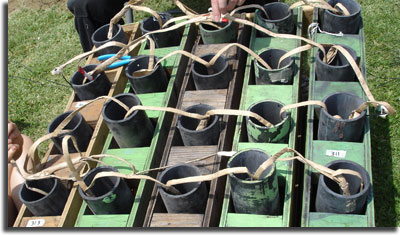 Quick Match Splicing Quick Match Splicing
Why do we need to splice quick match if most shows are electrically fired?
There are a few reasons to know how to splice quick match.
1) You may have to repair it from time to time, so it is important to know how to deal with it.
2) If you have 5 finale chains that are supposed to fire on one cue, instead of using 5 electric matches, you can splice all of the chains together and only fire it with one (two electric matches is standard practice for redundancy).
3) Give redundancy to multiple chains firing from a single cue. For example if you have 2 chains firing on one cue, and you have two electric matches to fire them, you can splice the two chains together to give you additional redundancy/reliability.
Why so much redundancy?
When quickmatch fires, it is very violent, which frequently causes it to blow apart before it has a chance to transfer fire to all of the shells in the chain. This is the main cause for shells not to lift in the finale. By adding redundant splices on both sides of the chains, you are giving additional paths for the fire to travel around the chains, thus circumventing and blown piece of quickmatch.
|